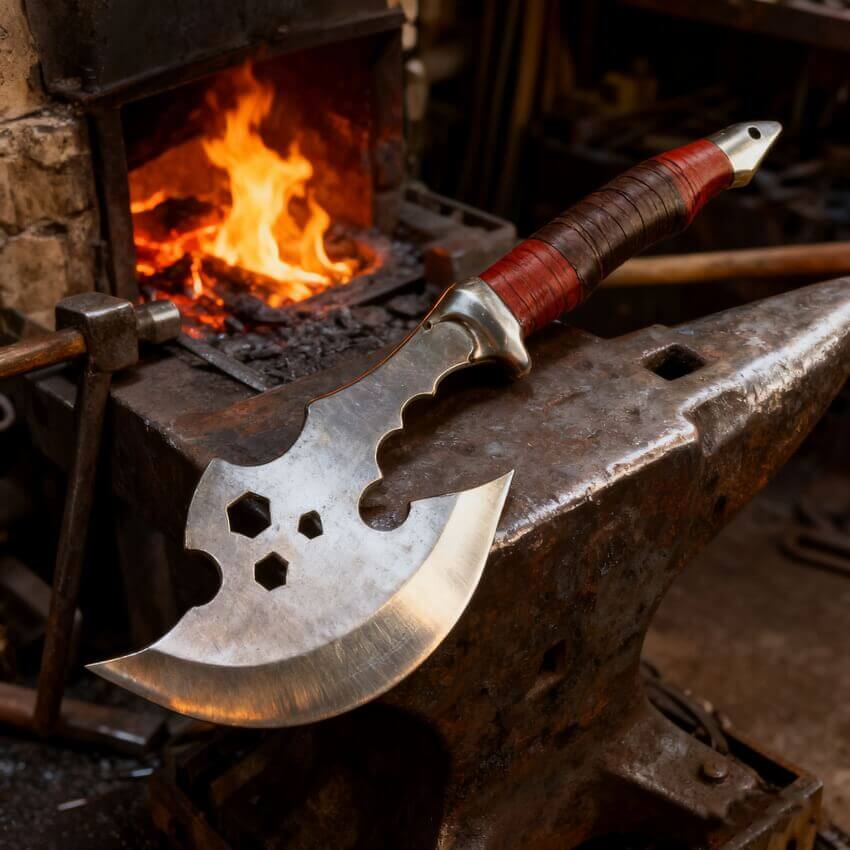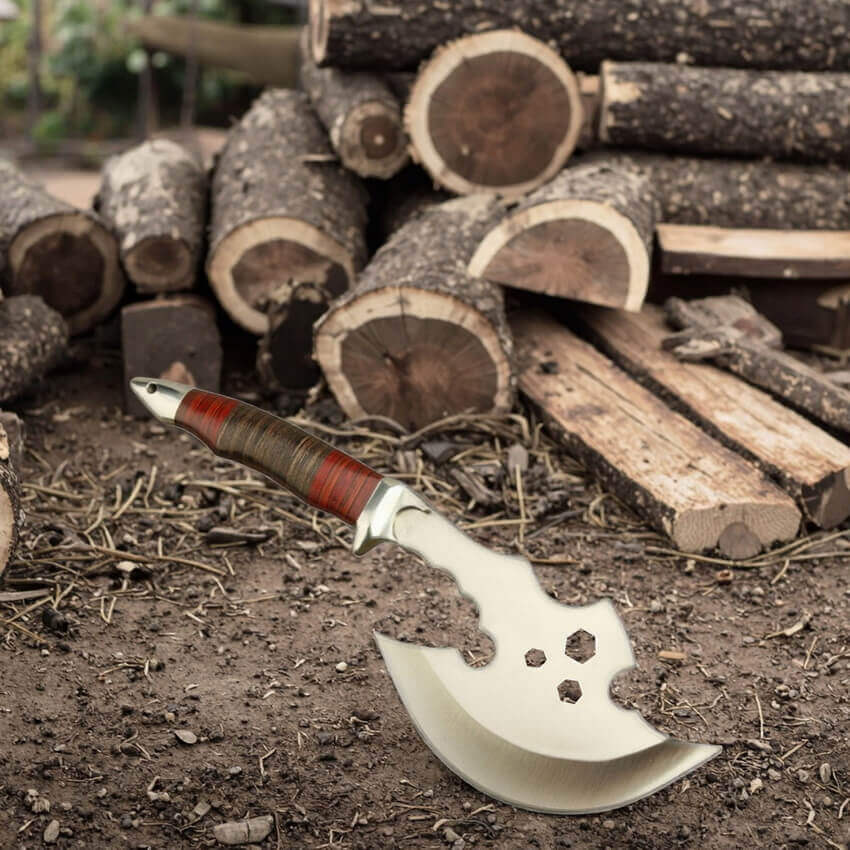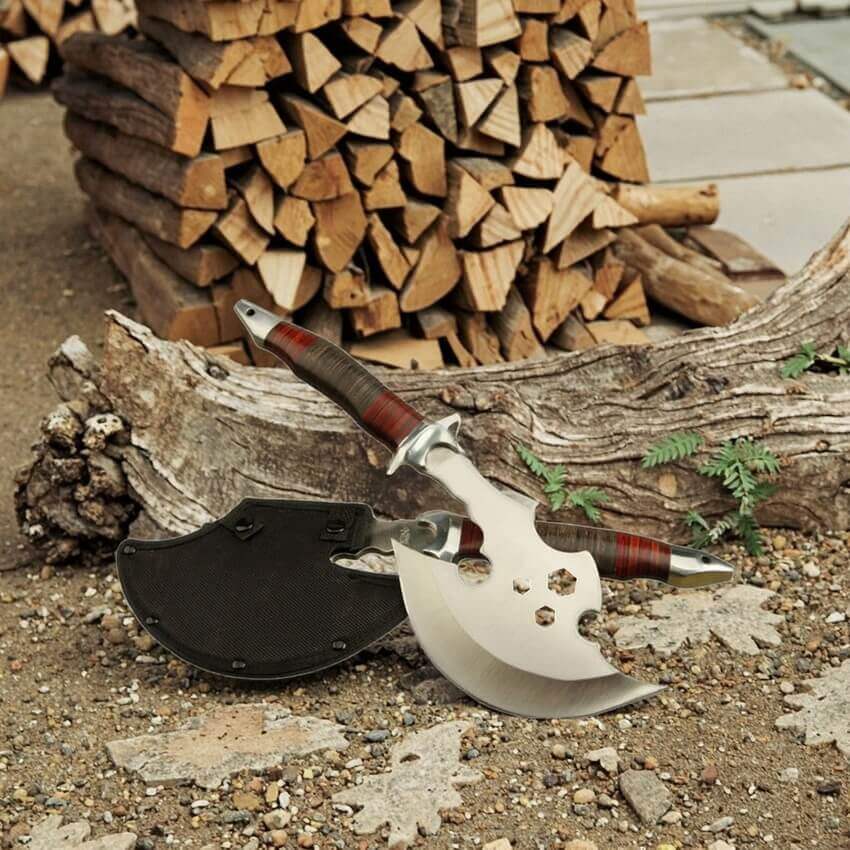![]() Windy
Windy
 WeChat
WeChat
 WhatsApp
WhatsApp
Click:71 seen
In jungle exploration or outdoor survival scenarios, a handy tool is of vital importance. The multi-functional axe, with its unique design and diverse functions, has become a popular choice for many people.
Features
This multi-functional axe has a distinctive appearance. The axe blade has a graceful arc shape, with a sharp front end, making it easy to pierce and chop. Around the blade are several hexagonal holes of different sizes, which can be matched with corresponding screws and have a wrenching function. The handle is made by combining wood and metal, with the wooden part having natural textures, providing a stable feeling when holding it, and the metal part serving to reinforce and connect, making the handle and axe blade join more firmly. At the end of the handle, there is a small hole, which is convenient to use a rope to fix the axe in the backpack or tie it to the wrist to prevent it from falling accidentally in the jungle.

Usage techniques
Cutting and chopping: When encountering fallen tree trunks or branches that need to be dealt with, use the sharp front end and sharp blade of the axe to aim at the target and forcefully chop, quickly clearing a passage or obtaining usable wood. When cutting finer vines or branches, also use the sharp blade to easily complete the operation.
Building shelters: When building a temporary shelter, use the blade of the axe to cut the branches to the appropriate length, then use the sharp front end to dig out grooves on the branches to facilitate the connection of the branches. If there are loose screws at the connection points of the shelter, you can use the hexagonal holes on the axe blade to find matching holes of the same specification and fit them on the screws to easily tighten and enhance the stability of the shelter.
Assisting in obtaining food: When finding fruits growing high up, use the sharp front end of the axe to hook the branches gently and pull them to an accessible height to pick the fruits; at the riverbank, you can use the sharp front end of the axe to pick out crabs and other food from the cracks in the rocks.
Emergency handling: When the rope used to tie things breaks, you can use the sharp blade of the axe to carefully cut the vines and make a new rope.

Notes for Attention
Safe operation: When using the axe, make sure there are no irrelevant people around to avoid accidentally injuring others during the chopping process. When forcefully chopping, pay attention to your posture, stand firmly, keep your feet apart at the same width as your shoulders, and maintain body balance to prevent losing balance and falling due to excessive force. The chopping direction should avoid your body and limbs. Operate strictly in the forward and backward direction. Do not chop laterally or in the direction of your body.
Protect the blade: The blade of the axe is sharp. After use, clean the wood chips, dirt, and other debris on the blade promptly to avoid rusting due to prolonged contact with a humid environment. When storing, it is best to wrap the blade with a protective cover to prevent damage to the blade or accidental injury to yourself. At the same time, do not use the blade to chop overly hard objects, such as rocks, to avoid blade curling or cracking.
Check for firmness: Before each use, check if the connection between the axe handle and the blade is firm. If there is looseness, promptly reinforce it. You can use the hexagonal holes on the blade to cooperate with appropriate screws for tightening to prevent the axe parts from falling off and causing danger during use. Also, check if the handle has cracks or damages. If so, replace the handle or repair it in time.
Use appropriate force: According to different usage scenarios and target hardness, control the force appropriately. When chopping a thick tree trunk, you can increase the force slightly, but do it gradually to avoid the axe rebounding and injuring yourself with excessive force at once; when dealing with fine vines or performing precise operations, reduce the force to maintain the accuracy and stability of the movement, and avoid excessive force that may cause damage to the axe or fatigue to yourself.
For children and beginners: Children should use the axe under the supervision of adults, and necessary safety knowledge and operation methods should be explained before use. Before using it, beginners should preferably practice in a safe environment to familiarize themselves with the weight, balance, and force application of the axe, master the correct operation skills, and then use it in complex environments such as the jungle.

